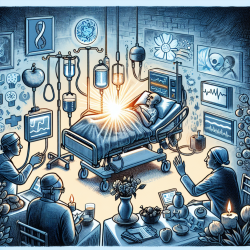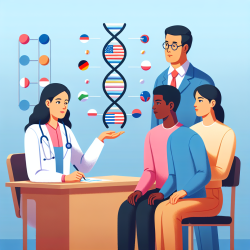Introduction
The integration of electronic health records (EHRs) into clinical practice has become a pivotal development in the healthcare industry. The research article, The U.S. National Library of Medicine and standards for electronic health records: One thing led to another, highlights the transformative role of the U.S. National Library of Medicine (NLM) in establishing terminology standards crucial for EHRs. As practitioners in speech-language pathology, understanding and implementing these standards can significantly enhance our practice, leading to better outcomes for the children we serve.
The Importance of EHR Standards
Data-driven decision-making is at the core of effective speech-language pathology. The NLM's work in developing standards such as Logical Observations Identifiers Names Codes (LOINC), SNOMED CT, and RxNorm has laid the foundation for consistent and reliable clinical data across various healthcare settings. These standards ensure that the data we collect is interoperable, accurate, and accessible, which is crucial for developing personalized treatment plans and tracking progress over time.
Implementing EHR Standards in Practice
For speech-language pathologists, adopting EHR standards can improve the quality of care by:
- Ensuring consistency in terminology, which facilitates better communication among healthcare providers.
- Enhancing the accuracy of patient records, which aids in the development of more effective treatment plans.
- Improving data sharing capabilities, allowing for more comprehensive and coordinated care.
By integrating these standards into our practice, we can ensure that the data we use to make clinical decisions is robust and reliable.
Encouraging Further Research
While the current standards provide a solid foundation, continuous research and development are necessary to address the evolving needs of the healthcare industry. As practitioners, we can contribute to this ongoing effort by:
- Participating in research studies that explore the application of EHR standards in speech-language pathology.
- Collaborating with other healthcare professionals to share insights and best practices.
- Advocating for the inclusion of speech-language pathology-specific data elements in EHR systems.
By staying engaged with the latest research and developments, we can ensure that our practice remains at the forefront of clinical excellence.
Conclusion
The integration of EHR standards into speech-language pathology practice is a crucial step towards improving patient outcomes. By leveraging the work of the NLM and other key players in the field, we can enhance our ability to provide high-quality, data-driven care. To further explore the research that has informed these developments, I encourage you to read the original research paper, The U.S. National Library of Medicine and standards for electronic health records: One thing led to another.










